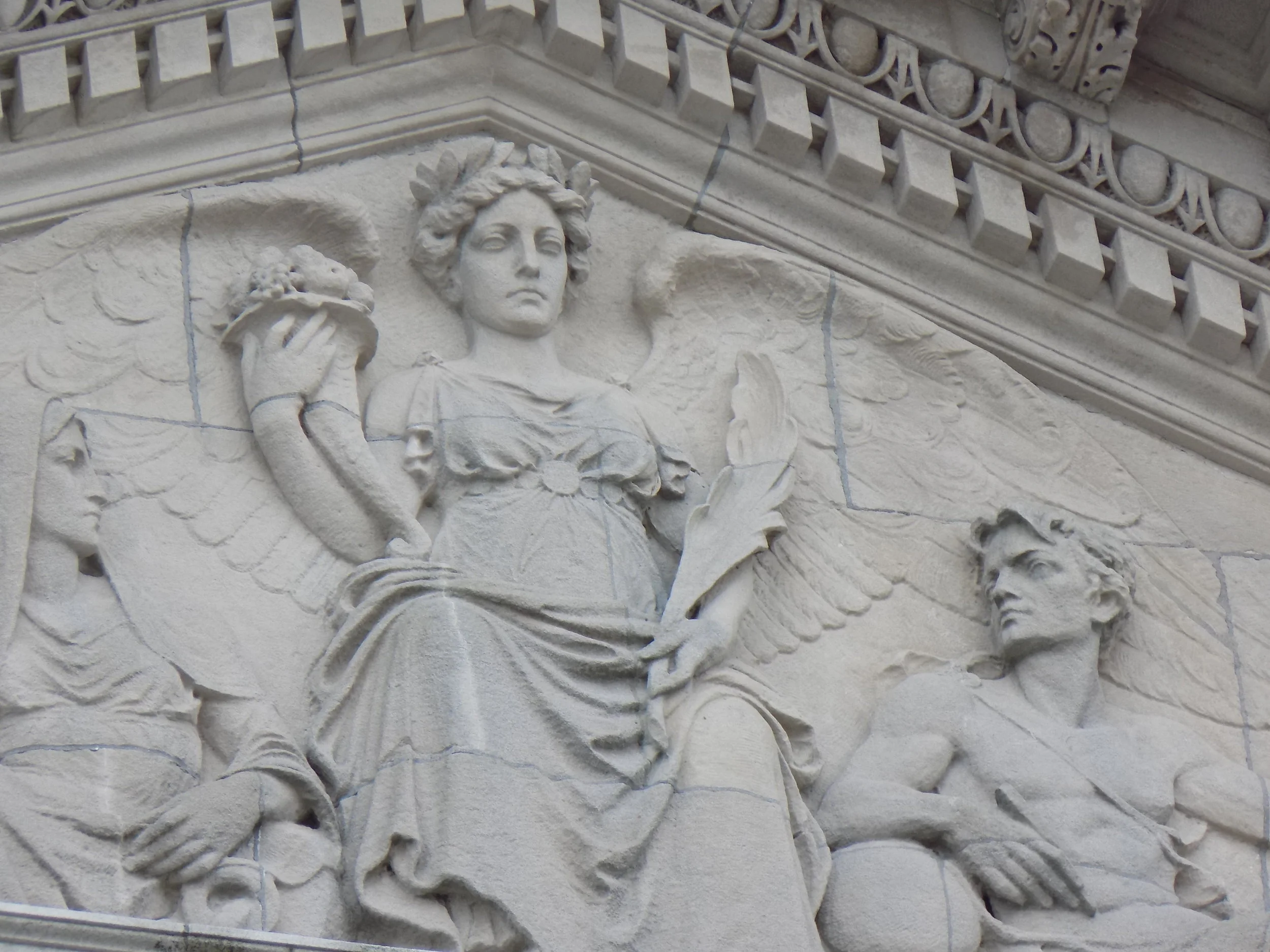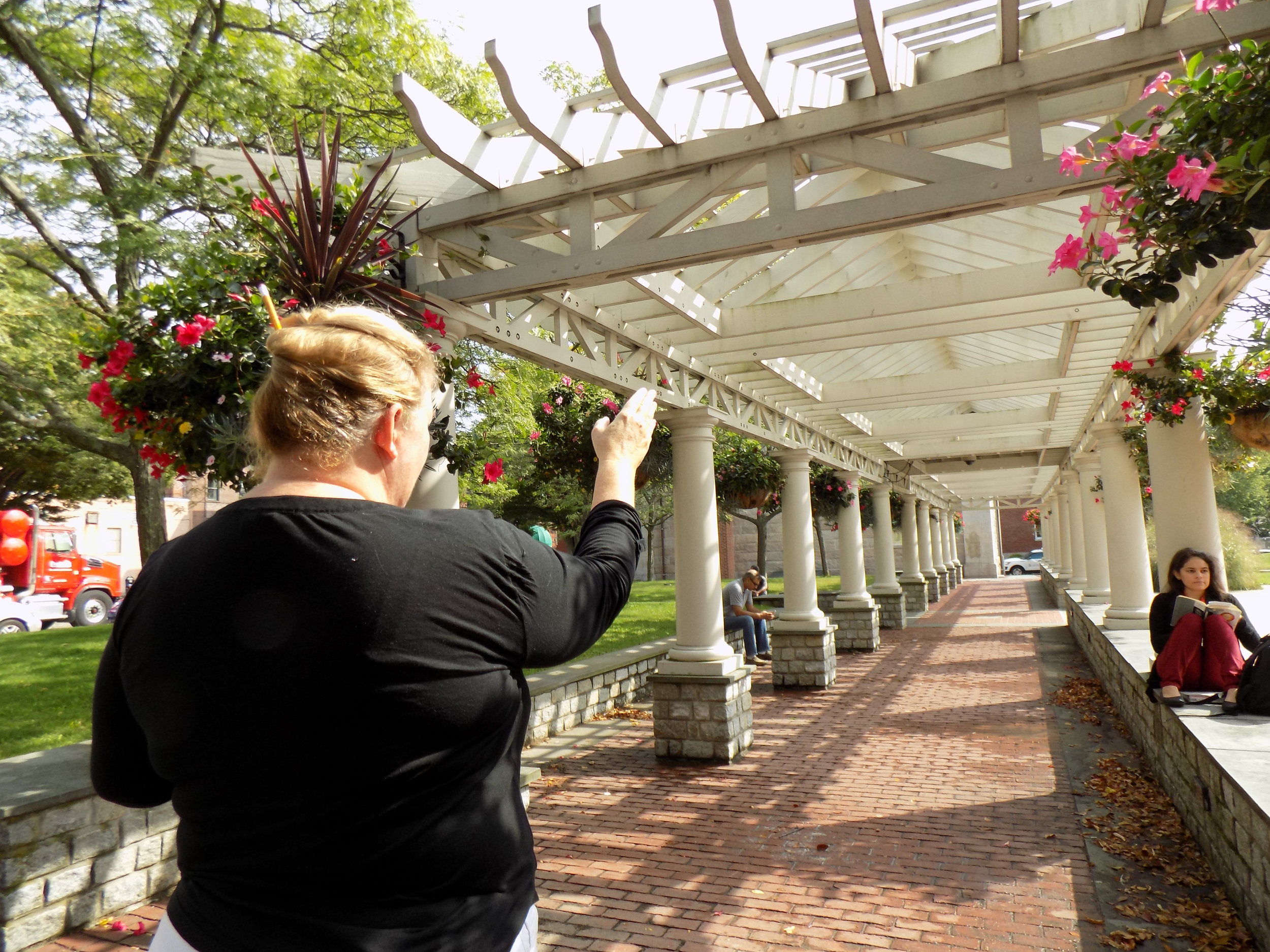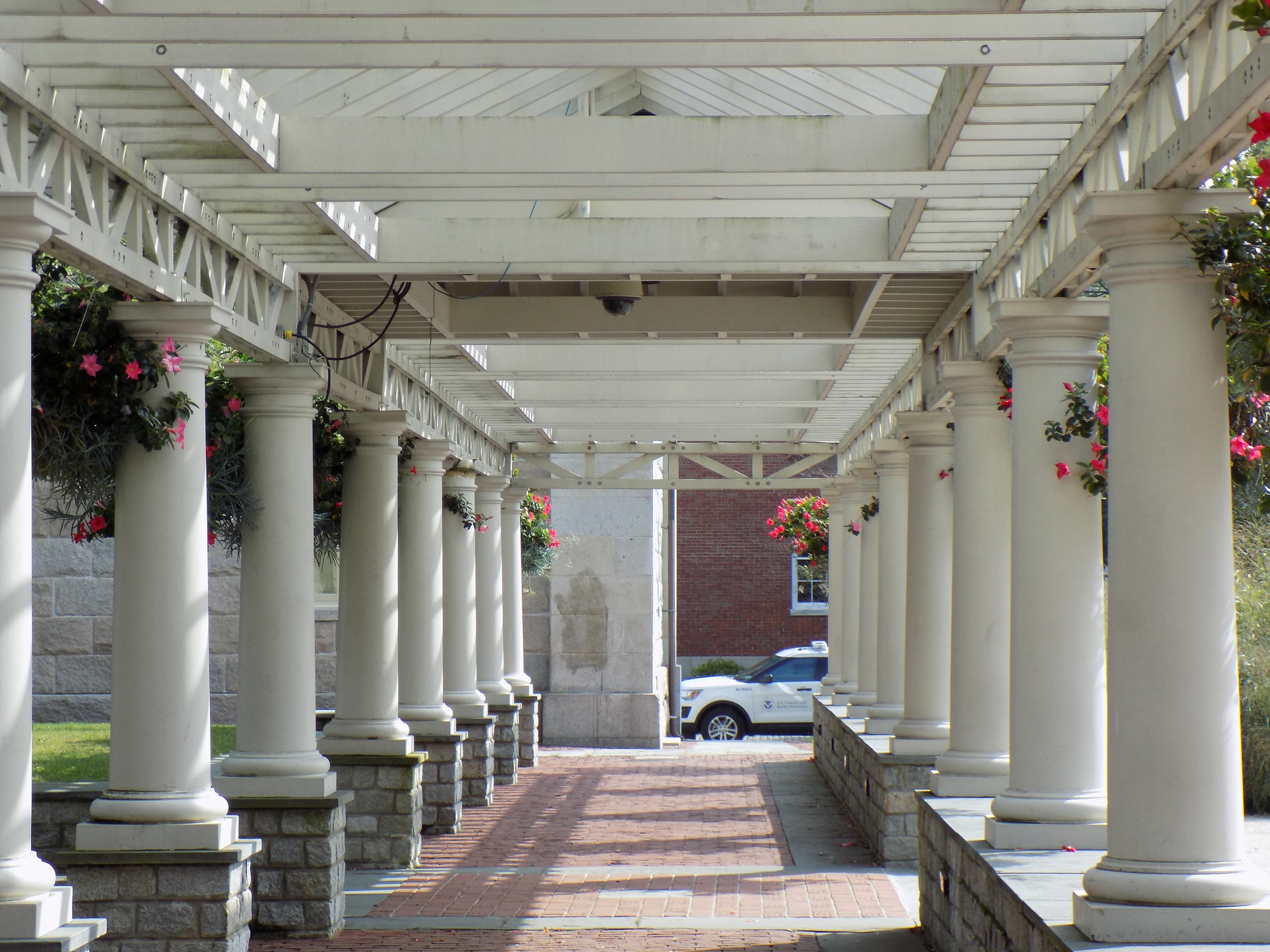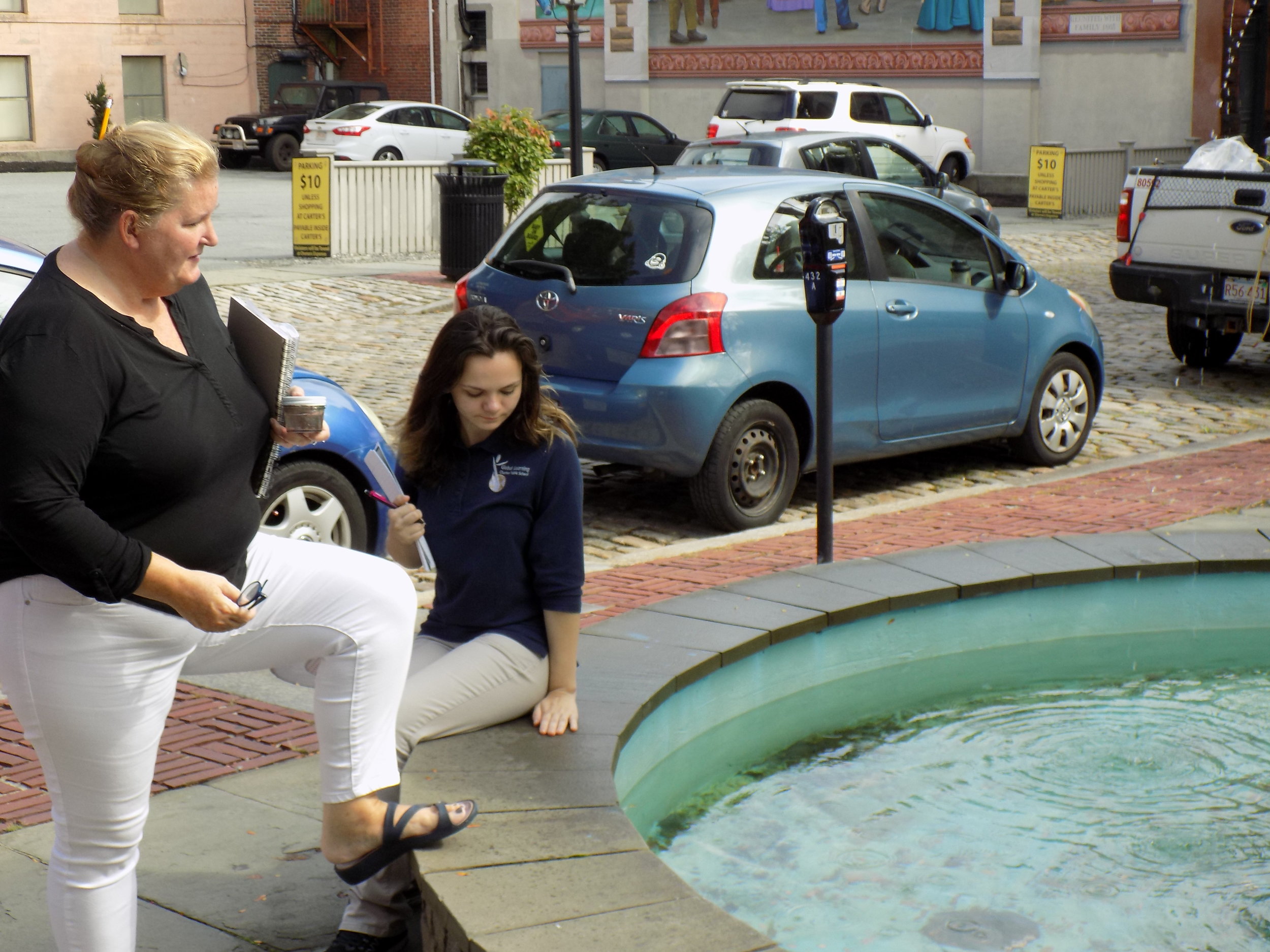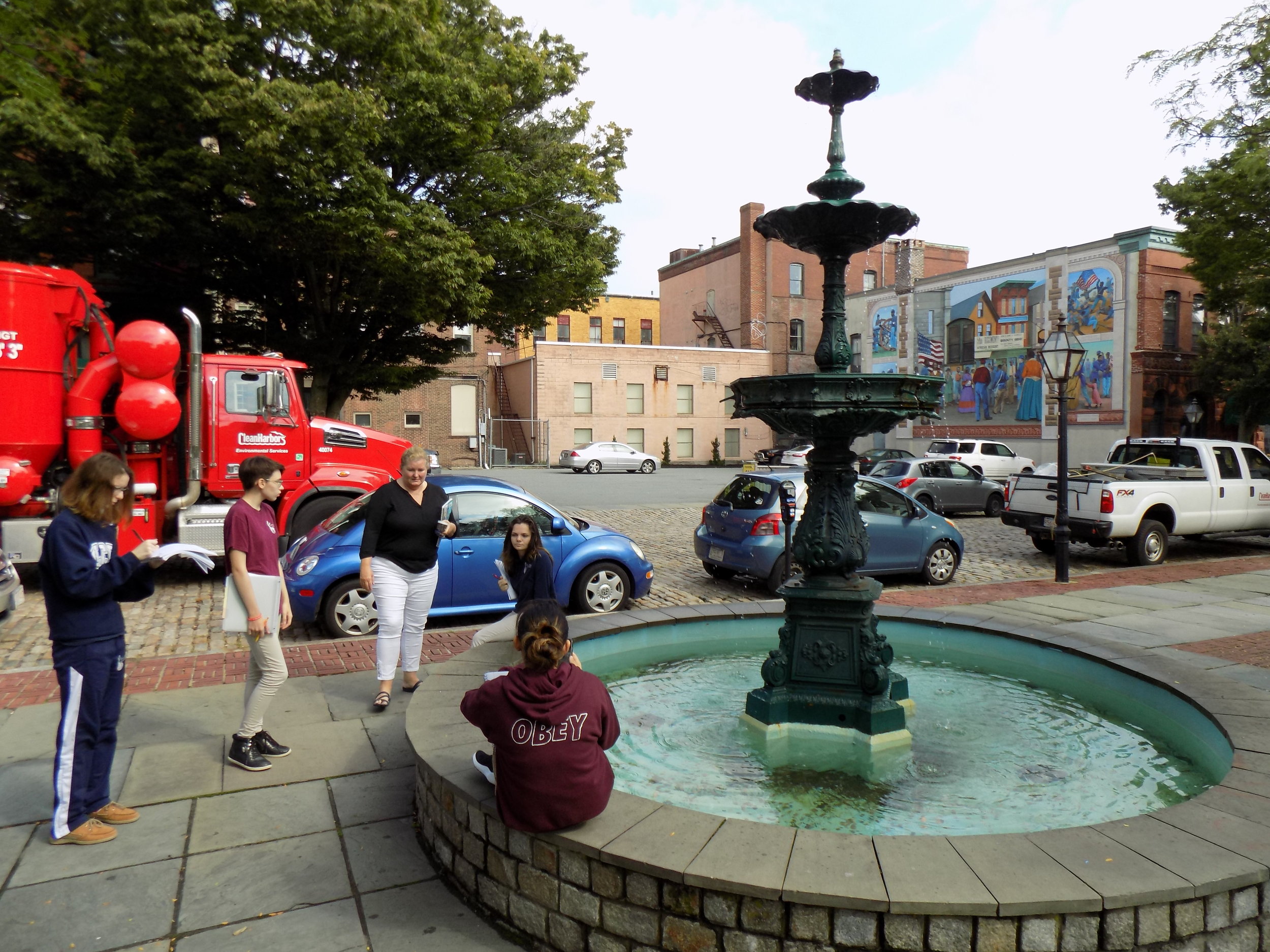By Sabrina Fay
Construction in downtown New Bedford may be continual, but so is the learning of the Port to Port students. Today, they ventured out to observe the local architecture and its Classical influence. Mrs. Eastman quizzed the students on their knowledge of Ancient Greek and Roman struct as they observed some of New Bedford's more historical buildings, including one of New Bedford's old banks. It's pediment depicted an angel with her wings spread wide, and as Mrs. Eastman mentioned, "marks the building as important". The class noticed multiple Greco-Roman banks in the area, built to store the immense wealth that the city accumulated during its whaling and textile years.
Banks were, and continue to be, places of great importance; they are pass-throughs for money and thereby anchors for a society's economy. The architecture of Ancient Greece and Rome brings to mind power, affluence, and authority, and so it was a natural choice for the designers of New Bedford's buildings to craft imposing arches and columns. The Customs House especially was a place meant for serious business, and still exudes that attention-grabbing presence today.
The class got to see less stony and serious structures as well. Stopping by a small park, the students walked along an open portico, taking note of the dappled shade and communal feeling, An old, Roman-inspired fountain is the center of this area, fostering a sense of unity and serenity amongst New Bedford residents inspired by the great acropolises and marketplaces of other societies. And of course, this bustling span of blocks is only a short distance away from the harbor; the water can be seen from just looking down from atop a cobblestone-paved hill.
The class also watched another tour conducted by the New Bedford Historical Department just across the street, observing people learn for the first time about the past of a place which they have lived for most or all of their lives. They returned to campus eager to begin their journals, and equally eager to learn more of the integration and influence of Classical culture with our own.
All of the above images are available on the Field Trips page of the Gallery.
